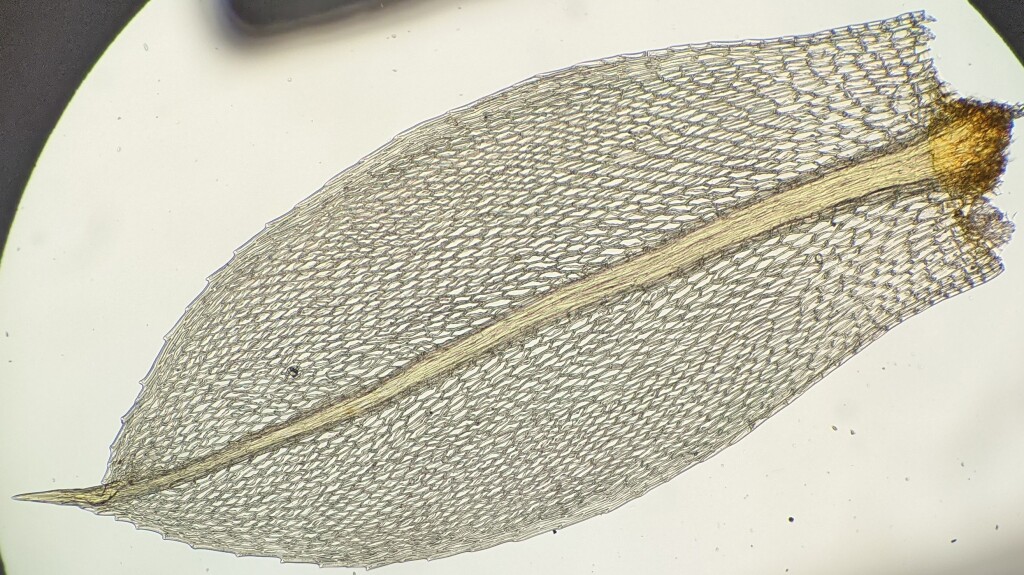Rosulabryum subtomentosum
(Hampe) J.R.SpenceDioicous. Asexual reproduction by globose or ellipsoid, orange to red rhizoidal tubers. Tufts or turfs on rocks, bright or yellow-green. Stems branching by innovation, 10–35 mm long, sometimes with elongate sparingly branched pendent stems to 10 cm long, red-brown, often blackish when old,. Rhizoids brown to reddish brown. Leaves erect-spreading when moist, erect to erect-spreading, contorted and often twisted around stem when dry, obovate to spathulate, 4–6 mm long, 1.2–1.5 (–1.7) mm wide, rarely concave; apex acute; costa excurrent as a ±reflexed mucro; margin serrate in apical 1/3, strongly recurved in basal ¾, with 4–8 rows of more elongate cells forming a distinct border; laminal cells in apical half rhomboidal-hexagonal, 40–80 μm long, 12–20 μm wide; basal laminal cells ±broadly rectangular, to c. 100 μm long. Seta 20–40 mm long, red. Capsule pendulous to erect, cylindric or narrowly-obloid, 2.5–6.5 mm long, symmetric.
VVP, Gold, CVU, GGr, DunT, NIS, EGU, HSF, HNF, OtR, Strz, VAlp. Along and south of the Great Dividing Range in woodland, wet sclerophyll forest, rainforest or beside streams. Also WA, SA, QLD, NSW and Tas. New Zealand.
 Spinning
Spinning


